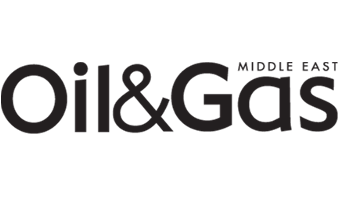When we look around us, we can always see some products or items that have been processed in a modern refinery. Fuels at petrol stations is the obvious one, but refinery products are not limited to liquid fuels, but are also present in food, cosmetic, and pharmaceutical packaging as well as other polymers. Even renewable energy relies on refined products, such as encapsulation resins for solar panels and rotor blades for wind turbines. Taking a closer look at the factors that have influenced the development of our modern lifestyle, we can safely say that oil refining technologies are one of the most important & crucial enablers. Besides all the great personal benefits that daily convenience brings, the refining of crude oil has contributed to the development of almost all manufacturing industries that rely on a continuous supply of energy.
The term refining covers various physical and chemical processes, such as pretreatment of crude oil, physical separation (distillation), treatment of impurities, further chemical conversion and finally blending of process streams to achieve desired product specifications.
Before the core refining process, the distillation, can be initiated by heating using fired heaters, the crude oil (or blend of compatible crudes) must go through several steps, the most important being filtration, dewatering, desalting, de-emulsification and stabilisation. Another important detail is the assessment of the chemical composition of the crude oil. Three of the most important parameters are the true boiling temperature of the different fractions and further evaluation of their properties using different methods (including chromatography), allowing to calculate indicative percentage yields by comparing the actual yields with theoretical yields based on the stoichiometry of the crude composition. Once these parameters are known, the refinery process engineers can adjust pre-distillation heaters to optimum conditions by balancing crude oil flow and temperature by adjusting the heater fuel and the air supply in the combustion chamber.
Inside the main fractionation column, the physical separation process begins under atmospheric pressure conditions. A typical temperature for condensation of primary refinery products is 50-200°C for light distillates, 200-350°C for medium distillates and distillates obtained above 350°C are considered heavy.
Gaseous products, mainly propane and butane, are the lightest products and are collected at the top of the column. Their primary use is to produce various products such as petrochemical feedstocks, isomerisation feedstocks for the gasoline pool and liquefied petroleum gas (LPG). Atmospheric residues are extracted from the bottom of the column and are further distilled in a lower pressure environment. This reduces the boiling temperature range of the crude components and separates additional products while minimising the risk of coke formation in the column. The products from the vacuum distillation column are classified as light vacuum oil (LVO) and heavy vacuum oil (HVO), which are further processed in the fluid catalytic cracking (FCC) unit or a Hydrocracking Unit.
Unlike the FCC, hydrocracking is typically considered a bottom of the barrel process - processing feeds that have higher carbon molecule composition compared to the feeds yielded during the primary distillation. By adding hydrogen to the catalytic cracking reaction, longer molecules are broken down into shorter ones with reduced carbon content and less impurities (such as sulphur.)
Back to the separation: theoretically, the higher the column and the more condensation trays and internal packings are installed, the better the physical separation should be. However, there are certain limitations when installing internals, because apart from the efficiency benefits, they also reduce the overall capacity of the column. Nevertheless, the need for better separation, delivering specific fractions has led to a need for solutions that can extend the performance of existing fractionators, - one such solution already exists in the form of dividing wall columns (DWCs). Similar to the three main refinery distillates types, the DWC types are divided into the lower, middle and upper sections of the columns. The use of DWCs in the refinery processes not only lead to higher energy efficiency, but also allow the reaction surface area of a single unit to be increased and the performance of three separate units to be combined into one.
DWCs are also at the heart of the integration of refining and petrochemicals, as well as the concept of converting crude oil into chemicals, where finer separation allows for better recovery of benzene, toluene and xylene (BTX) fractions. This is important as the content in today’s gasoline pool must be as low as possible while keeping the octane number as high as possible.
After separation, the main distillates go through another purification process called hydrotreating. The purpose of hydrotreating is to remove other impurities such as sulphur, nitrogen, metals and heteroatoms, while the remaining residual streams are sent to the so-called bottom-of-the-barrel (BoB) refinery section.
The BoB section consists of metallurgically tougher units where more rigorous thermal and conversion processes take place. Typical BoB units include solvent deasphalters, visbreakers, hydrocrackers, slurry-phase hydroprocessing units and delayed cokers. These types of units aim to convert residues and low-value streams into higher-value components - which can then be blended with the primary light and middle distillates.
Heavy distillate vacuum yields, the light and heavy vacuum oils (LVO & HVO), consist of longer hydrocarbon chains that can be fed to the fluid catalytic cracking (FCC) unit. In the FCC unit, the heavy hydrocarbons are split into lighter (shorter) molecules, which once broken down can be blended into the petrol or diesel pools.
The FCC unit plays an important role in the overall performance of the refinery. It is considered a carbon rejection process, partly because of the coke deposits on the catalyst during cracking (which is likely to burn out during regeneration), and partly because it allows lighter distillates to be produced during the process without the need to add hydrogen.
FCC is often referred to as the "heart of the refinery" and is currently one of the most flexible conversion processes in the refinery, as the production regime can be adjusted to favour on-purpose production of maximum propylene in addition to the main gasoline and diesel components. The process also produces a residue called slurry oil, which is suitable for further processing in the BoB section of a classic refinery configuration. There are several options here – hydrocracking, feeding into the delayed coker, Severe Residual FCC (SR-FCC) or solidification into petroleum coke-like fuel pellets.
The FCC unit will maintain its strong position as the main production process in the refinery - the technology is evolving and adapting - looking to process alternative (or ‘exotic’) feedstocks, such as blends with bio-feedstocks for co-processing and other secondary feedstocks, such as depolymerised oils from plastic wastes.
These technological developments are not easy to achieve, there are a number of challenges to overcome before the next generation of FCC processing can be considered ‘perfect’. For example, bio feedstocks can have highly variable chemical composition, higher TAN, fatty acid compounds, water vapour content as well as impurities due to particles formation. Such variations in feedstock composition can poison the catalyst and reduce reactor performance, which in turn can cause other problems, such as increased coke composition and ovaerall compromised FCC product yields.
Speaking of waste plastic oils, there are also variables that require extra attention during handling. Oils derived from polyethylene (PE) and polypropylene (PP) promise fewer problems during processing because they do not contain impurities that can poison the catalyst, while other plastics such as polyvinyl chloride (PVC), contain chlorine and can cause problems during cracking.
However, we see that the efforts & innovation of the entire downstream industry are focused on overcoming these challenges, meaning that the solutions, if they are not already here, are in an advanced stage of development and just waiting to be implemented on a larger scale.
So, it is safe to conclude, that refineries, even in transformed shape will keep supporting our growing daily needs for fuels, chemicals and energy.

